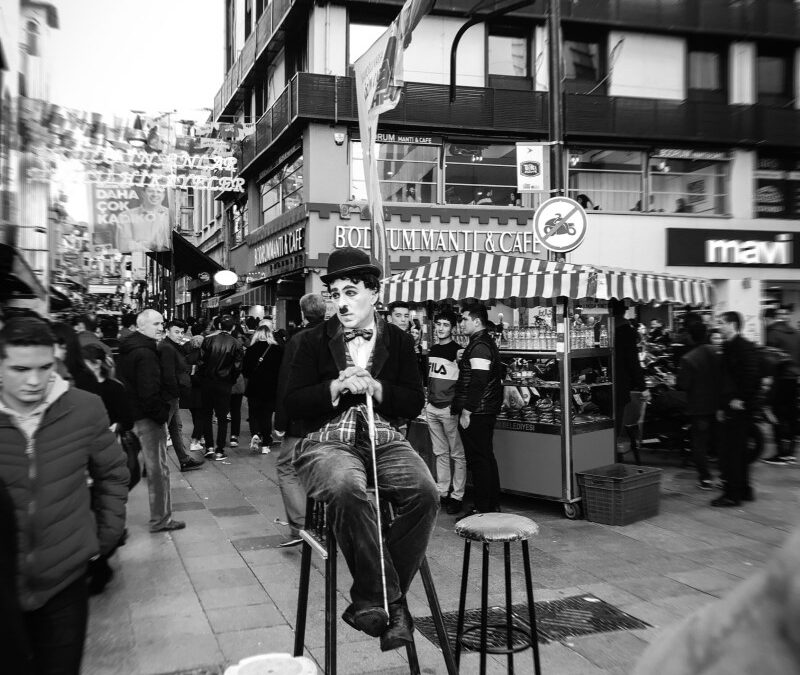Words are powerful. But truly effective communication is about more than the words we speak. Our gestures and body language play a crucial role in conveying emotions, emphasising points, and connecting with our audience during a presentation. Just as a picture is worth a thousand words, the right gesture can reinforce your message and leave a lasting impact on your listener.
It’s an often-quoted fact that a huge amount of our communication’s impact comes from non-verbal cues, such as facial expressions, gestures, and posture. Experts vary in their estimation of how much of our meaning is determined by our non-verbal communication, but undoubtedly by understanding the importance of how you are being perceived, you can vastly the increase the effectiveness of your presentations.
Here are some practical ways to ensure your words are being supported by your gesture, facial expressions, and physicality.
- Establish an open and confident body language.
Stand tall with your shoulders back and maintain an open stance, projecting confidence and approachability. Avoid crossing your arms, as it can create a defensive barrier between you and the audience. Practise this open and confident way of carrying yourself.
- Allow your story to inhabit your body.
As an audience, we respond best to a presenter who is so passionate and excited by their message they can’t help but let it spill over into their physicality. Get your script out of your head and into your body – it helps if, in rehearsal, you hugely exaggerate this. Prance around the room, making huge and over the top gestures, imagining you’re a children’s TV presenter. You can reign it back for the real thing, but this exercise helps to engage every part of you in your presentation.
- Use gesture to reinforce your key points.
Strategic hand gestures can emphasize your message and help listeners remember important information. Go through your presentation and highlight a few points you really want to stand out, and then decide which gesture you will use to emphasis it. Work it in to your rehearsals so that it doesn’t look staged. This is also a good way to help your audience remember your points – they have a visual reference to accompany the words they’re hearing.
- Don’t forget about your face!
Your face is a powerful tool for expressing emotion and connecting with your audience. When we’re nervous, our facial expression is one of the first things to go – we are so focused on getting the words right, we forget about the aesthetics! Practise adjusting your facial expressions to match the tone of your message, demonstrating enthusiasm, empathy, or seriousness as needed.
- Practise making eye contact.
Eye contact is such an important part of gaining trust and conveying confidence, but you need to practise it: challenge yourself to hold eye contact with people in your conversations today so that you are used to it by the time your presentation comes round.
- There is power in stillness.
Pacing and repetitive gesture is distracting and makes you look nervous. That said, try to avoid staying rooted to one spot; instead, walk purposefully on stage, using your movements to transition between points or interact with different sections of the audience. Film yourself in rehearsals and see how much movement you are using.
- Connect through mirrored gesture.
Adapting your gestures and body language to match your audience’s mood and energy helps build trust. Observe their reactions and respond accordingly, ensuring they feel understood and connected to your message. Practise this in your day to day conversations so that it becomes a natural part of your communication.
- Incorporate some props!
Exploring ways to integrate props and visual aids into your presentation can further support your gestures and body language, making your message more tangible and memorable. But make sure you have practised using these before the day so that you aren’t thrown by something else to think about!
In the world of presentations, gestures and body language are powerful tools that can really help you reinforce your message, create a stronger connection with your audience, and leave a lasting impression. But note how many times I’ve used the words “practise” and “rehearse”. I’m always amazed by the number of people who don’t properly rehearse their presentations and yet expect to be able to get up and give a confident, relaxed and effective performance!
If you’d like help preparing for your next presentation, get in touch.

